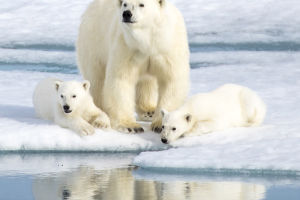Dolphins have always been good friends of human beings. Nowadays, many people like to see dolphins in aquariums, but everyone's understanding of dolphins is very limited.
1. Living environment: Dolphins mainly inhabit warm tropical waters, but there are also some species, such as bowhead dolphins, that prefer to live in colder waters, usually in shallow waters or at least near the surface.
Dolphins live widely in the world's oceans, and are also distributed in inland seas and brackish water near the estuaries of rivers. Individual species are found in inland rivers.
2. Features: Appearance features: The torso of dolphins is spindle-shaped, the skin is smooth and hairless, the body is strong and flexible, and it is good at jumping and snorkeling.
It is the fastest mammal in the water. Swimming Features: Dolphins do not dive for long and deep dives like other cetaceans.
"Dolphin swimming" is a unique swimming method of dolphins, the whole body jumps out of the water at a small angle and then enters the water at a small angle. Dolphins are particularly fast, usually swimming at a maximum speed of about 30 to 40 kilometers per hour.
3. Their main food is some small fish, small shrimps, small crabs, squid and so on in the water. It can be seen that there is still a lot of food that dolphins can eat.
Among these types of food, one of the dolphins' favorites is squid, or squid. In addition, small fish are also the food that dolphins often prey on, specifically, there are many types. Due to the large size of dolphins, some medium and large fish may also become dolphin food.
4. The mouth of a dolphin is generally pointed. There are many teeth in its mouth. The number of teeth in the upper and lower jaws may be about 100. These teeth are sharper and thinner, allowing them to break up food.
Although it is rare in real life, dolphins will emit their own unique sounds. The forehead on the dolphin's head acts as an acoustic lens, turning the received sound waves into narrow sound beams. Dolphins respond to themselves according to the objects in the water.
The reflected sound of the call is used to determine the orientation and distance of an object. The frequency of the repeated calls of dolphins increases with the reduction of the target distance, so it is possible to use this sound detection without vision or other senses to freely pass through obstacles or catch food.
Its echolocation system not only has a good ability to distinguish distance and direction, but also has a very strong ability to identify targets, and can judge the shape and material of objects in the water
Under normal circumstances, most dolphins can live to be 25-30 years old. Certain species of dolphins themselves live longer, such as the Chinese white dolphin, which can live up to 40 years. There are many factors that affect the specific lifespan of dolphins. For example, environmental factors, if the environment is polluted, the lifespan of dolphins will be reduced.


